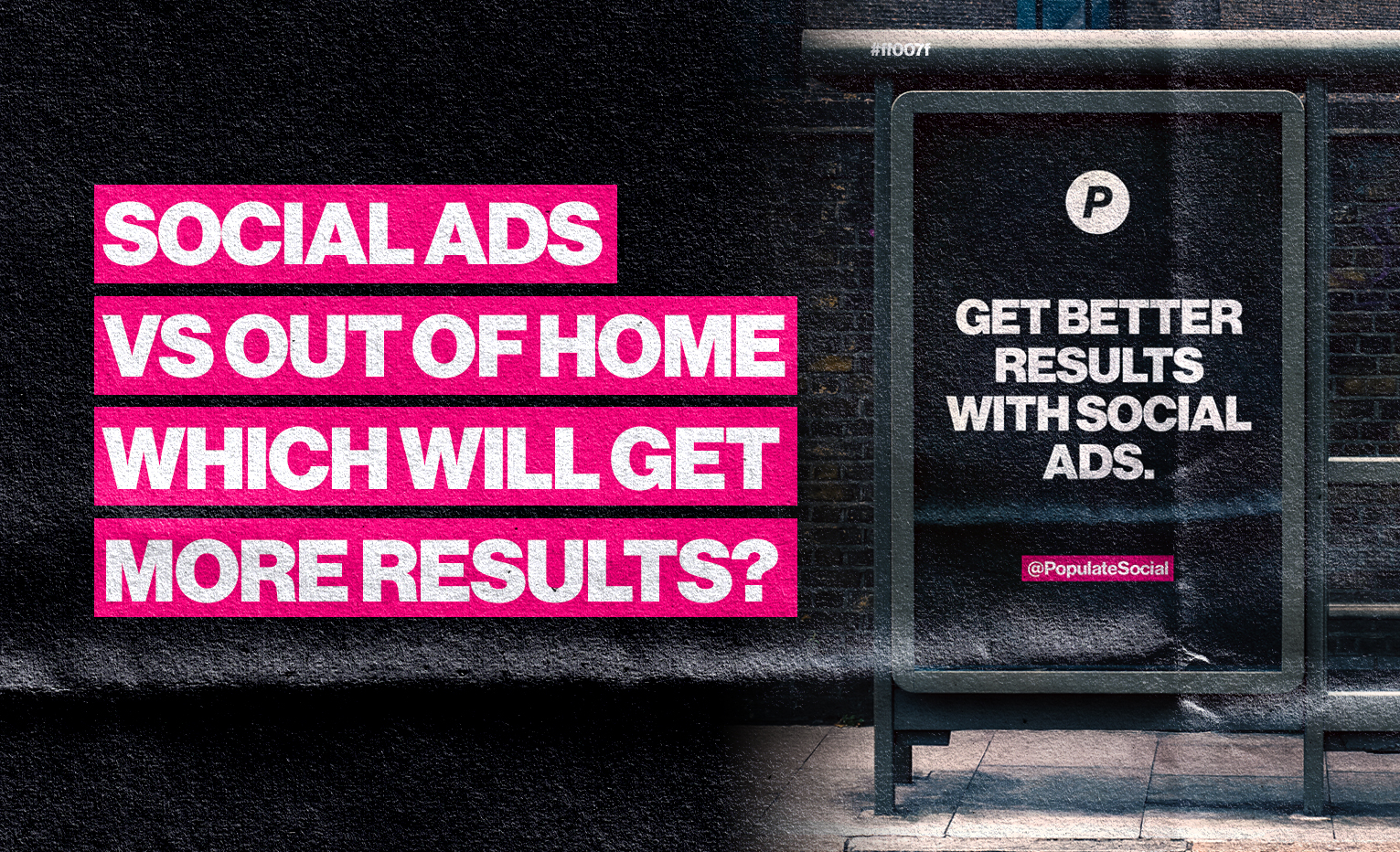Social Ads Vs Out of Home: Which will get more results?

The current landscape…
The advertising landscape has drastically changed in the last decade, with social media platforms like TikTok and Meta taking center stage for advertising. In contrast, traditional forms of advertising, such as out-of-home (OOH) advertising, have declined in popularity. Brands need to consider where to allocate their advertising budget, and the question arises: should you be considering social media advertising rather than out-of-home advertising? In this blog, we will explore why social media advertising should be a priority for brands and how it outperforms OOH advertising in several ways.
Let’s get right to it, why is it better value for money?
1. Targeting Capabilities
Social media platforms allow brands to target their audience with precision, based on demographics, interests, behaviors, and location. For instance, if you’re a fitness brand that wants to target people interested in healthy lifestyles, you can create ads that only appear in the feeds of people who follow fitness influencers or regularly search for health-related content. The targeting options are nearly endless and enable brands to reach the right audience with the right message. In contrast, OOH advertising has limited targeting capabilities, and it is challenging to measure its effectiveness in reaching a specific audience.
2. Cost-Effectiveness
Social media advertising is typically more cost-effective than OOH advertising. While OOH advertising can be expensive, social media advertising is affordable and flexible. Brands can set their budgets and adjust their campaigns in real-time, depending on performance. Social media advertising platforms also offer cost-per-click or cost-per-impression pricing models, which allow brands to pay only for the engagement they receive. In contrast, OOH advertising involves a fixed cost, which may not be viable for smaller businesses or startups.
3. Measurability
One of the biggest advantages of social media advertising is its measurability. Brands can track the performance of their campaigns in real-time and adjust their strategies accordingly. Social media platforms provide data on impressions, clicks, conversions, and engagement, allowing brands to measure the ROI of their campaigns accurately. In contrast, OOH advertising is challenging to measure, and it is difficult to determine its impact on sales or brand awareness.
4. Flexibility
Social media advertising is highly flexible and allows brands to test different ad formats, messaging, and targeting strategies. Brands can quickly make adjustments to their campaigns and optimize their performance based on data. Social media platforms also offer a variety of ad formats, including video, carousel, and sponsored posts, giving brands more options to showcase their products or services creatively. In contrast, OOH advertising involves a lengthy process of planning and execution, and once the ad is up, there is no room for changes.
5. Engagement
Finally, social media advertising offers a high level of engagement that is unmatched by OOH advertising. Social media platforms enable brands to communicate directly with their audience, respond to comments, and build relationships. Brands can also create shareable content that can be reposted or shared by their followers, further increasing their reach. In contrast, OOH advertising is a one-way communication channel, and there is no opportunity for interaction or engagement.
In conclusion…
Social Media advertising offers numerous advantages over out-of-home advertising, including targeting capabilities, cost-effectiveness, measurability, flexibility, and engagement. Brands should consider social media advertising as a priority when allocating their advertising budget, as it provides an excellent opportunity to reach the right audience with the right message, increase brand awareness and drive sales.
Let's start advertising on social.
Let's get this conversation started

